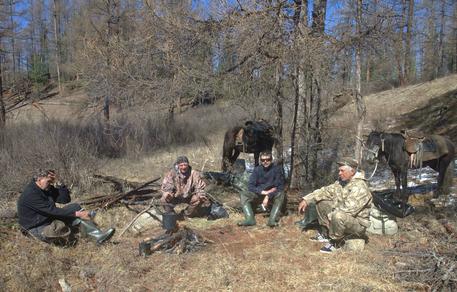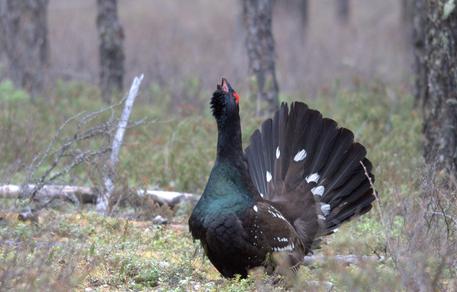Behind the Scenes: Asia’s Amazon and the black-billed capercaillies
Writer and director Franz Hafner shares some impressions on shooting the upcoming three-part documentary ‘Asia’s Amazon – The forbidden River’.
Some words on geography
Shooting a movie about the Amur, ’Asia’s Amazon’, presents itself like a challenge – due to many reasons. Besides the rough climate and the inaccessibility of the terrain, one mostly has to deal with huge distances between preferred shooting spots, which are determined by the seasonal events rather than geographical logistics.
With 4,500 kilometres in length, this river is one of a kind – and a rather tricky one to conquer with a camera team. From its headwaters in Mongolia’s secluded mountains, the river forms a 2,000 kilometres long border between Russia and China, flowing into the Northern Pacific after a few thousand kilometres of pure wilderness. Shooting in such a vast area as the Amur-region requires proper planning. However, despite good organisation, it is still possible that one has to travel for more than 3,000 kilometres to reach the next shooting location.
The case of the black-billed capercaillies
We encountered such a scenario when we wanted to film the courtship display of the black-billed capercaillies. Until the end of April we were stationed in the Russian Far East to film the ice jam in this area. Then we set out towards the Amur’s headwaters, where the best places to observe the shy animals’ courtshipping activities can be found. We took the Trans-Siberian Railway from Chabarovsk and travelled two days westwards, covering more than 2,000 kilometres on our way to Chita, the administrative centre of Zabaykalsky Krai. We continued our voyage by car following the badly-kept roads into the mountainous area of the Sochondo. In the village of Kira we changed our methods of transport – in order to conquer the wilderness of the Amur region better, we continued by foot with a guide, who lead us through the area, while two horses carried our luggage. Three days later, a hundred kilometres of forest, devoid of humanity as well as paths, lay behind us. We had crossed enormous areas of swampland and powerful mountain rivers, and had struggled to make our way through the dense undergrowth and the windfalls.
But our efforts paid off: eventually we reached the place where we hoped to find the black-billed capercaillies ready for their courtship display, on the edge of a swampland area.
A total of seven days travel via train, car and horses and nearly 3,000 kilometres after we had set out, we finally arrived – but only to begin our actual work. First of all we had to scout the area. Were the black-billed capercaillies still there? How many were they? And where did they centre, where were the strongest males that would display the most interesting behaviour?
Already the first day showed that courtshipping was still well underway, and we were able to locate more than a hundred males taking part. Around the central area we built a few hideouts, enabling us to film the events from various perspectives. The struggles of the journey were indeed very much worth the result: black-billed capercaillies are difficult to be located, as well as their preferred courting places, which have become extremely rare. We found a favourable spot and also quite a number of animals. Therefore we were very much looking forward to the upcoming days of shooting.
The following days our cameraman Sepp was surrounded by numerous male black-billed capercaillies, which were doing the typical crackling noise during their courtship. These sounds lead to the arrival of many females, and hence to the courting ritual’s peak. It wasn’t too far-fetched to liken this experience of being surrounded by an army of castanet-players somewhere in the middle of Spain. Even after we had left the shooting location, the clattering sounds were still stuck in our heads. After a week of filming we had shot enough material to leave the black-billed capercaillies to themselves again, and so we were on our way back to the village of Kira.
To reach our next location on schedule, we had a journey of roughly a thousand kilometres ahead of us – but, as we had come to learn in the past months, in this region that’s merely a stone’s throw away.
Written by: Franz Hafner
To read more about the project and watch a trailer, follow this link.


